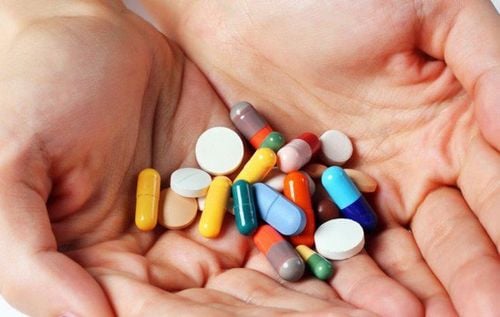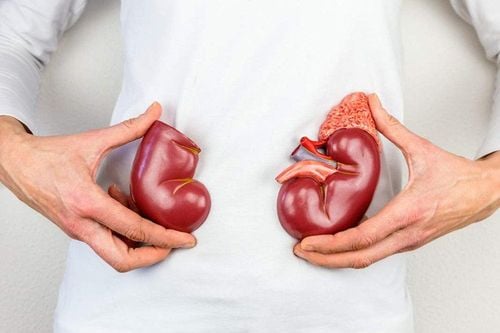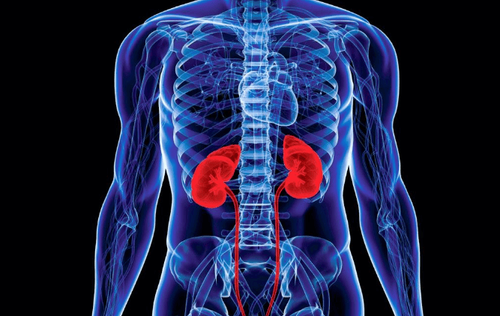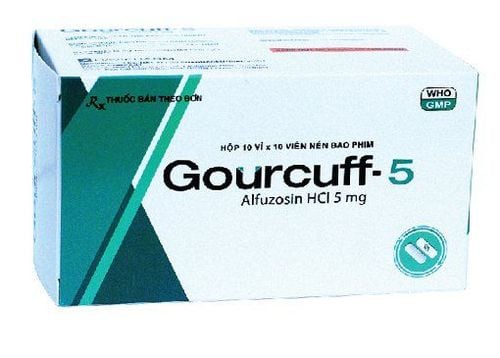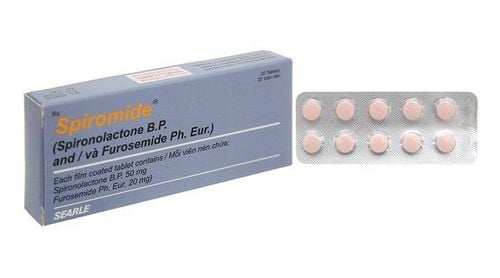This is an automatically translated article.
The article was written by a Doctor of Nuclear Medicine - Department of Diagnostic Imaging and Nuclear Medicine, Vinmec Times City International General Hospital.Acute renal failure is a syndrome caused by many causes, either extrarenal or renal, causing temporary, acute failure and loss of function of both kidneys, due to the cessation or rapid decline of filtration rate. glomerulus.
1. Is acute kidney failure dangerous?
Acute kidney failure is a condition in which the kidneys suddenly decline in function, lose the ability to remove waste from the body, and do not balance water and electrolytes. Acute kidney failure is a disease mainly caused by age, the older you are, the higher the risk.Acute kidney failure can happen very quickly, after only a few hours or days. Acute kidney failure can lead to death if not diagnosed and treated promptly. With early diagnosis and proper treatment, acute kidney failure can be completely cured, kidney function can be restored to normal.
If detected and treated late, the patient will develop complications in acute renal failure, which will make the patient's prognosis much worse. According to a report by the European Society for Dialysis and Renal Transplantation (EDTA), the mortality rate is only 8% if kidney damage is alone, but mortality increases to 65-76% if one or more organs are added. Other organs are damaged (Bullock and Kindle 1985), especially lung damage, patients requiring mechanical ventilation, cardiovascular complications, and sepsis complications.
2. Diagnosis of acute renal failure
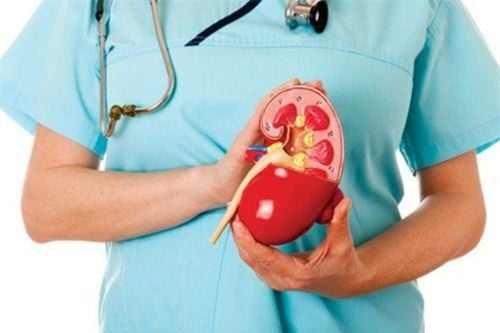
Chẩn đoán suy thận cấp như thế nào?
Find a possible cause of acute renal failure (but sometimes the cause cannot be found). There is anuria or oliguria occurring at an acute level. Rate of increase in serum creatinine > 42.5 μmol within 24-48 hours from baseline, if the patient's baseline creatinine is < 221 μmol/l. Or: Rate of increase in serum creatinine > 20% within 24 - 48 hours from baseline, if the patient's baseline creatinine is > 221 μmol/l. A decrease in glomerular filtration rate < 60 ml/min, occurring after anuria. Blood potassium is usually elevated. There may be metabolic acidosis. The disease progresses through four stages. 2.2 Diagnosis of acute renal failure according to clinical form Anuria form: usually easy to diagnose, based on the factors mentioned above. Urine-preserved acute renal failure: diagnosis is based on increased blood urea and creatinine levels, decreased glomerular filtration rate, occurring suddenly after the cause of the disease, before these parameters were still present. within normal limits.
3. General principles in the treatment of acute renal failure
Quickly eliminate the cause of acute renal failure if any (depending on the group of causes, there are appropriate treatment measures). Correction of circulatory disorders, the most important of which is to restore blood and fluid volume, maintain systolic blood pressure of 100 - 120 mmHg. Restoration of urine flow Correction of homeostasis caused by acute renal failure Symptomatic treatment is appropriate for each stage of the disease. Indications for extra-renal dialysis when necessary. Pay attention to the nutrition, water and electrolyte balance suitable for each stage of the disease.4. Treatment of acute renal failure according to each stage of the disease
4.1. Attack stage of pathogens Try to eliminate the cause of the disease: rehydration when there is dehydration, remove urinary obstruction, gastric lavage when the patient drinks carp bile in the first 6 hours ...Closely monitor oliguria and anuria to have the earliest diagnosis of acute renal failure.
4.2. Stage of oliguria, anuria 4.2.1 Maintain water and electrolyte balance Rehydrate in patients with anuria or oliguria with edema, ensure the balance in the negative direction (-): that is, water in is less than water out . Using furosemide loop diuretic, the initial dose can be 40-80 mg, the maximum dose is 1000 mg.
When the patient is able to urinate without medication, the diuretic must be stopped immediately because then the patient may urinate a lot (> 10 liters). The duration of action of intravenous furosemide lasts 4 hours.
Do not use diuretics if acute renal failure due to post-renal causes (due to urinary tract obstruction in the ureters, bladder, urethra...).
In case of acute renal failure due to prerenal causes (hemorrhagic shock, dehydration shock, cardiogenic shock, septic shock, nephrotic syndrome, decompensated cirrhosis...): it is necessary to replace the circulating volume as soon as possible. As far as possible, do not use diuretics if circulating volume has not been adequately compensated.
4.2.2 Treatment of hyperkalemia Hyperkalemia is always a life-threatening risk for patients with acute renal failure:
Limit intake of K+: do not eat potassium-rich fruits and vegetables, do not use drugs, infusions containing K+ .
Eliminate necrotic foci, fight infection.
Drug
Calcium gluconate or chloride: intravenously as soon as the blood K + concentration is high: ≥ 6.5 mmol/l or when there are obvious cardiovascular manifestations (bradycardia, arrhythmia, wide QRs complex), dose average 1g, by slow intravenous injection over at least 5 minutes. Repeat dose after 30 minutes as needed. Glucose combines with insulin to help lead potassium into cells, starting to work after about 30 minutes. An intake of about 200-250 ml of a 20% glucose solution can result in a reduction of 0.5 mmol/l of potassium. Dose of insulin used: 1 UI insulin atrapid/25ml Glucose 20%. Infusion or slow intravenous injection of sodium bicarbonate in the presence of acidemia to limit potassium from moving from the cell to the outside of the cell. Resin ion exchange through the intestinal mucosa: Resincalcio, Resinsodio, Kayexalate every 15g orally combined with sorbitol can reduce 0.5 mmol/l. The drug takes effect after 1 hour. If the patient cannot drink, the drug can be enema (100ml of isotonic fluid). Diuretics remove water and potassium. Acute dialysis: when medical treatment for hyperkalemia is unsuccessful and K+ ≥6.5 mmol/l. 4.2.3 Treat other electrolyte disturbances if present 4.2.4 Limit elevation of N-non-protein blood Protein-reduced diet. Eliminate the source of infection. 4.2.5 Antiacid treatment if present. 4.2.6 Treat other symptoms and complications, if any. Treatment of hypertension, heart failure.
4.2.7 Indication for acute dialysis Indication of emergency dialysis if medical measures for hyperkalemia are not met (blood K+ > 6.5 mmol/l). When there is obvious metabolic acidosis, pH < 7.2 (usually when urea > 30 mmol/l, creatinine > 600 μmol/l). Severe excess of fluid causes acute or threatened pulmonary edema acute 4.3 Stage of urinary return Mainly water and electrolyte balance. It is necessary to accurately measure 24-hour urine output and closely monitor blood electrolytes for timely adjustment.
When urinating > 3 liters / 24 hours: should replace fluid by intravenous line, the amount of fluid depends on the amount of urine, pay attention to enough electrolytes. When urinating < 3 liters/24 h: no severe electrolyte disturbance, just give Oresol. After about 5 days, if the patient is still urinating a lot, they should also limit the amount of fluid and drink, because the kidneys have begun to restore concentrated function. Closely monitor 24-hour urine for appropriate rehydration measures
4.4. Rehabilitation phase Still need to pay attention to nursing work: the diet needs to increase protein supplement when blood urea has returned to normal. Periodic follow-up as directed by the physician. Continue to treat the cause if present. Pay attention to the causes that can lead to chronic kidney failure (glomerular disease, interstitial kidney disease...).

Chế độ ăn cần tăng bổ sung đạm khi ure máu đã về mức bình thường
5. Renal scintigraphy to diagnose acute renal failure
Kidney scintigraphy was applied at the Nuclear Medicine Unit of Vinmec Times City International Hospital. This is the most advanced kidney function assessment technique, using high-precision recording equipment incorporating radioactive tracer.Renal scintigraphy method gives good quality images, this is an indispensable technique in probing kidney function, contributing to improving the efficiency of diagnosis and treatment of kidney and urinary tract diseases, including acute renal failure.
The patient is given intravenous radioisotope, then the nephrologist will record kinetic images and graphs of radioactivity over time of each kidney, then analyze the graph and images, thereby assessing the function of each individual kidney for the patient in the most accurate way.
Renal scintigraphy is applied in cases such as:
Assess the function of 2 kidneys or evaluate each kidney separately. Evaluation of kidney function before and after kidney transplant surgery. Evaluation and monitoring of urinary tract obstruction (post-renal causes leading to acute renal failure) Diagnosis, monitoring and evaluation of kidney diseases: acute renal failure, renal hypertension, pyelonephritis kidney disease, glomerulonephritis, tubular necrosis... When one kidney is suspected of having congenital disease. Identify kidney injuries.
6. Why should perform kidney scan at Vinmec Times City International General Hospital?
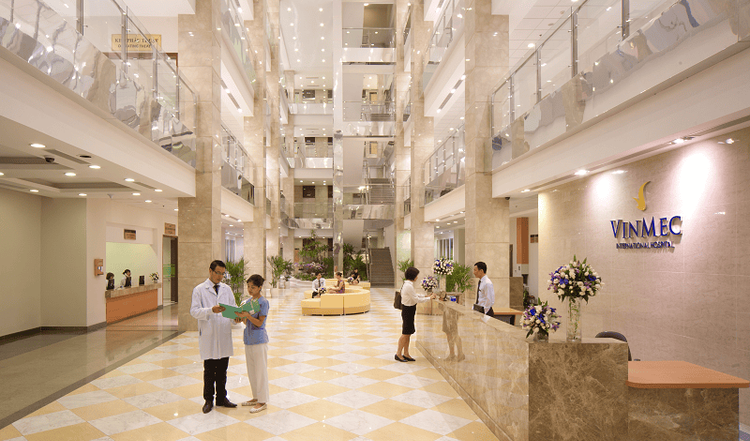
Vì sao nên thực hiện xạ hình thận tại bệnh viện Đa khoa Quốc tế Vinmec?
Vinmec's medical staff is very experienced, well-trained at home and abroad, will directly advise and support customers in the process of diagnosis and treatment, including with foreign customers.
Please dial HOTLINE for more information or register for an appointment HERE. Download MyVinmec app to make appointments faster and to manage your bookings easily.




